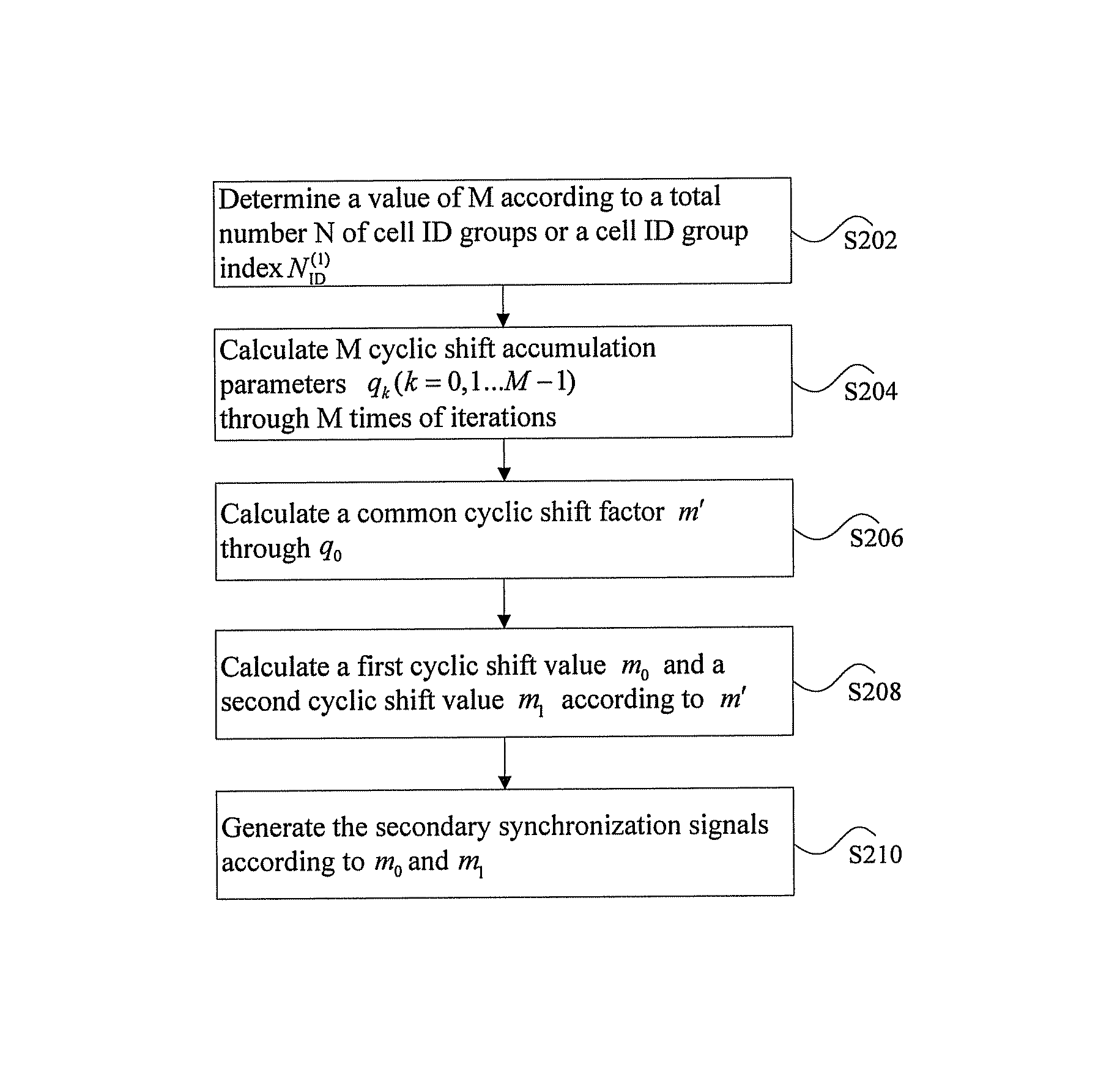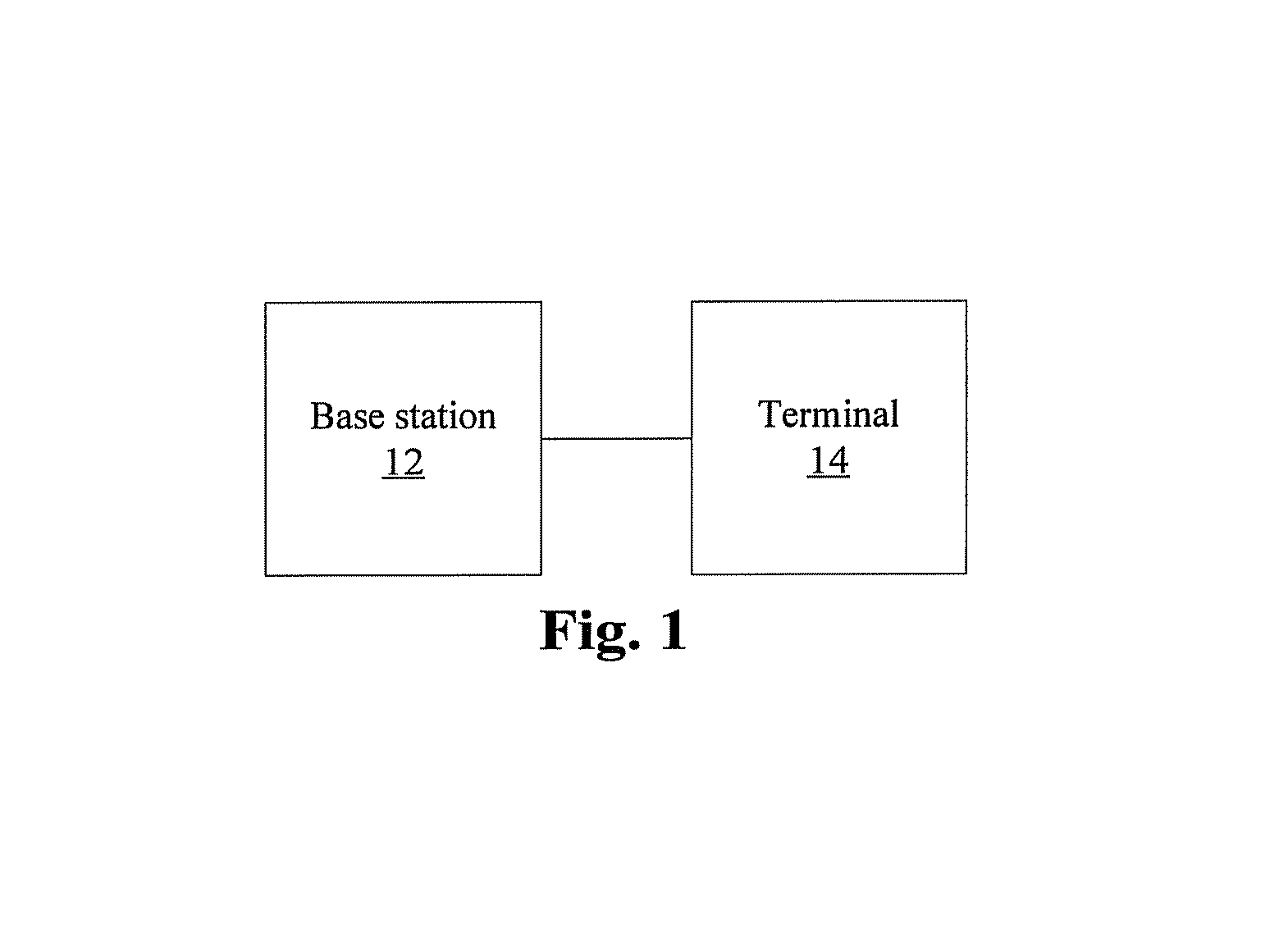Method and apparatus for generating secondary synchronization signals
a secondary synchronization and signal technology, applied in the field of mobile communications, can solve the problems of inability to support a greater number of cell id groups in the method for generating secondary synchronization signals in the related technologies, inability to normally access the system, and failure of frame synchronization, so as to simplify the realization complexity of the terminal, simplify the realization complexity of the transmitting end, and improve the backward compatibility
- Summary
- Abstract
- Description
- Claims
- Application Information
AI Technical Summary
Benefits of technology
Problems solved by technology
Method used
Image
Examples
embodiment 1
[0093]In the embodiment, suppose that the number N of the cell ID groups is 326, and the cell ID group index NID(1) corresponding to a certain cell is 196, therefore according to the embodiment of the present invention, as NID(1)<234, M=1. Furthermore, the cyclic shift values of two shift sequences can be obtained according to the following formula (3):
[0094]m0=m′mod31m1=(m0+⌊m′ / 31⌋+1)mod31m′=NID(1)+q0(q0+1) / 2q0=⌊NID(1)+q1(q1+1) / 230⌋q1=⌊NID(1) / 30⌋NID(1)=0,1…233(3)
[0095]The specific calculation process is that: q1=└NID(1) / 30┘=6 is obtained according to the cell ID group index 196; and then q0=7 is obtained according to
[0096]qk-1=⌊NID(1)+qk(qk+1) / 230⌋,
m′=224 is further obtained according to m′=NID(1)+q0(q0+1) / 2; finally, the cyclic shift values m0 and m1 of the two shift sequences corresponding to the secondary synchronization signals can be calculated according to m′:
m0=m′ mod 31=7,m1=(m0+└m′ / 31 ┘+1)mod 31=15.
[0097]According to the two cyclic shift values, two ...
embodiment 2
[0101]In the embodiment, suppose that the number N of the cell ID groups is 380, and the cell ID group index corresponding to a certain cell is 356, therefore, according to the embodiment of the present invention, as 329
[0102]m0=m′mod31m1=(m0+⌊m′ / 31⌋+1)mod31m′=NID(1)+q0(q0+1) / 2q0=⌊NID(1)+q1(q1+1) / 230⌋q1=⌊NID(1)+q2(q2+1) / 230⌋q2=⌊NID(1)+q3(q3+1) / 230⌋q3=⌊NID(1) / 30⌋NID(1)=0,1…386(4)
[0103]The specific calculation process is that: q3=└NID(1) / 30┘=11 is obtained according to the cell ID group index 356; and then q0=15 is obtained according to
[0104]qk-1=⌊NID(1)+qk(qk+1) / 230⌋(1≤k≤3)
via three times of iterations, m′=476 is further obtained according to m′=q0(q0+1) / 2; finally, the cyclic shift values m0 and m1 of the two shift sequences corresponding to the secondary synchronization signals can be calculated according to m′:
m0=m′ mod 31=11...
embodiment 3
[0109]In this embodiment, suppose that the number N of the cell ID groups is 360, the cell ID group index NID(1) corresponding to a certain cell is 126. The value of M can be calculated according to the cell ID group index NID(1); as NID(1)0=12, and m1=17. Alternatively, the value of M can be calculated according to the total number N of the cell ID groups, as N0=12, and m1=17.
[0110]The results of the two methods are the same, thus the two methods for obtaining the value of M provided by the embodiments of the present invention have the same effects, as the methods for generating the secondary synchronization signals provided by the embodiments of the present invention have excellent compatibility. The method for generating the secondary synchronization signals provided by the embodiments of the present invention can be compatible with the current method for generating the secondary synchronization signals in the LTE, without increasing the complexity of searching cells at the recei...
PUM
 Login to View More
Login to View More Abstract
Description
Claims
Application Information
 Login to View More
Login to View More - R&D
- Intellectual Property
- Life Sciences
- Materials
- Tech Scout
- Unparalleled Data Quality
- Higher Quality Content
- 60% Fewer Hallucinations
Browse by: Latest US Patents, China's latest patents, Technical Efficacy Thesaurus, Application Domain, Technology Topic, Popular Technical Reports.
© 2025 PatSnap. All rights reserved.Legal|Privacy policy|Modern Slavery Act Transparency Statement|Sitemap|About US| Contact US: help@patsnap.com



